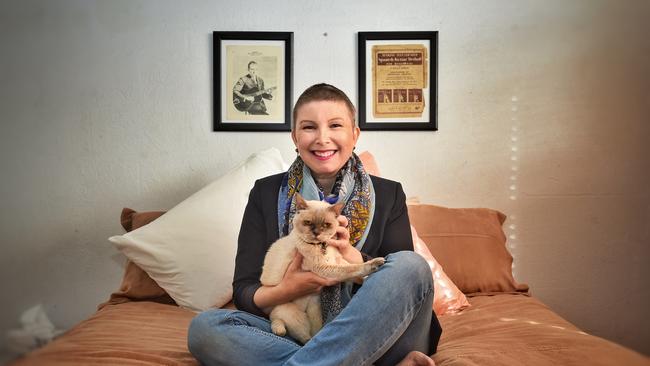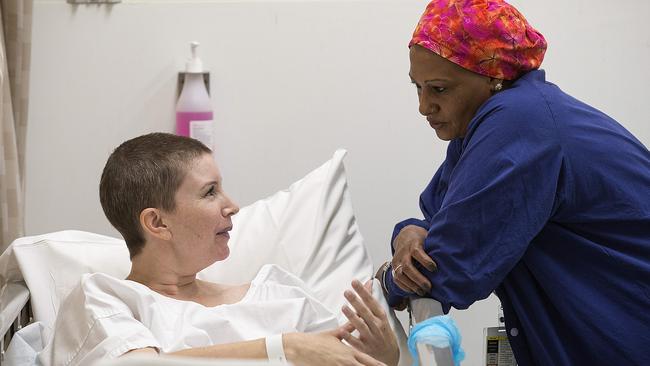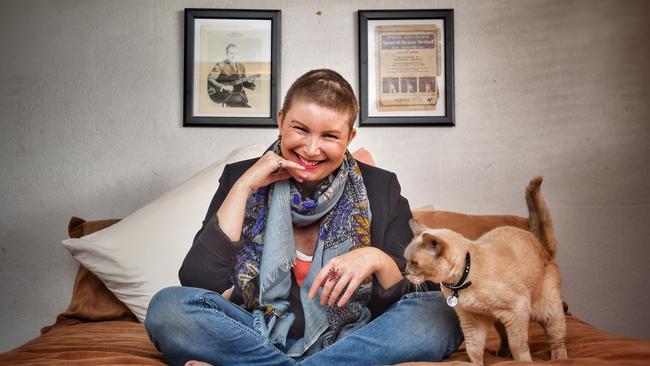Promising experimental treatment for hard-to-treat epilepsy
MELBOURNE woman Flora Purvis took 70 tablets a week but still had bouts of unconsciousness due to her epilepsy. Now a world-first trial at Melbourne’s St Vincent’s Hospital could help prevent her seizures.

VIC News
Don't miss out on the headlines from VIC News. Followed categories will be added to My News.
A MELBOURNE woman has become the first person in the world to receive a breakthrough device which uses brain activity to detect and prevent seizures.
Flora Purvis, 41, is the first of five patients to receive the implant as part of a two-year trial at St Vincent’s Hospital.
Medics hope it will eventually help gauge how well epilepsy medications are working — ending months or years of trial-and-error treatment.
Ms Purvis, who has multiple seizures daily, said she experienced episodes of unconsciousness lasting up to 90 seconds despite taking 70 tablets a week.
ST VINCENT’S CELEBRATES ANNIVERSARY WITH MEDICAL MARVELS
EPILEPSY TRIAL LEAVES VICTORIAN WOMAN SEIZURE-FREE
WORLD-FIRST BRAIN STIMULATION TRIAL

“Surgery wasn’t a decision I made lightly, but we’d tried all kinds of different drugs and changing the levels of them,” she said.
“I wanted to be the first one to do this, to be a pioneer, and be part of the solution. There are little kids out there with this who deserve a life.”
The Medtronic implant “listens” to the brain for specific electrical activity which warns of a seizure.
It can then stimulate a pea-sized section of the midbrain to stop the seizure occurring.
St Vincent’s director of neurology Prof Mark Cook and his team were developing a “Fitbit” for the brain — an implantable device which monitors epileptic seizures so patients can alter their lifestyle and treatment — when they discovered a change in the brain’s electrical activity called “critical slowing”. It occurred in the minutes before a seizure.
“It’s like an echo. We’re listening for a delay in the echo when getting closer to a seizure,” Prof Cook said. “In our experiments when we stimulated the brain before a seizure, we could stop it happening.”

Patients with a rare type of epilepsy called nodular periventricular heterotopia will be the first targets of the experimental treatment. It could be used in many types of hard-to-treat cases if successful.
Deep brain stimulation therapy has been used for epilepsy but with such mixed results it was rarely considered, prompting the St Vincent’s team to refine the procedure proving so successful in Parkinson’s disease.
Research fellow Dr Katrina Dell said it was the Medtronic device’s ability to listen to the brain that set the therapy apart, making it a potentially personalised treatment.
“When you stimulate the brain in Parkinson’s (disease cases), it’s easy to tell if it’s working because the tremors go away but with epilepsy it’s a waiting game,’’ she said.
“Instead of waiting potentially months and months of trying different stimulation parameters, we hope to get there much faster by analysing what we’re seeing in the brain to choose what’s working best for that individual patient.”


